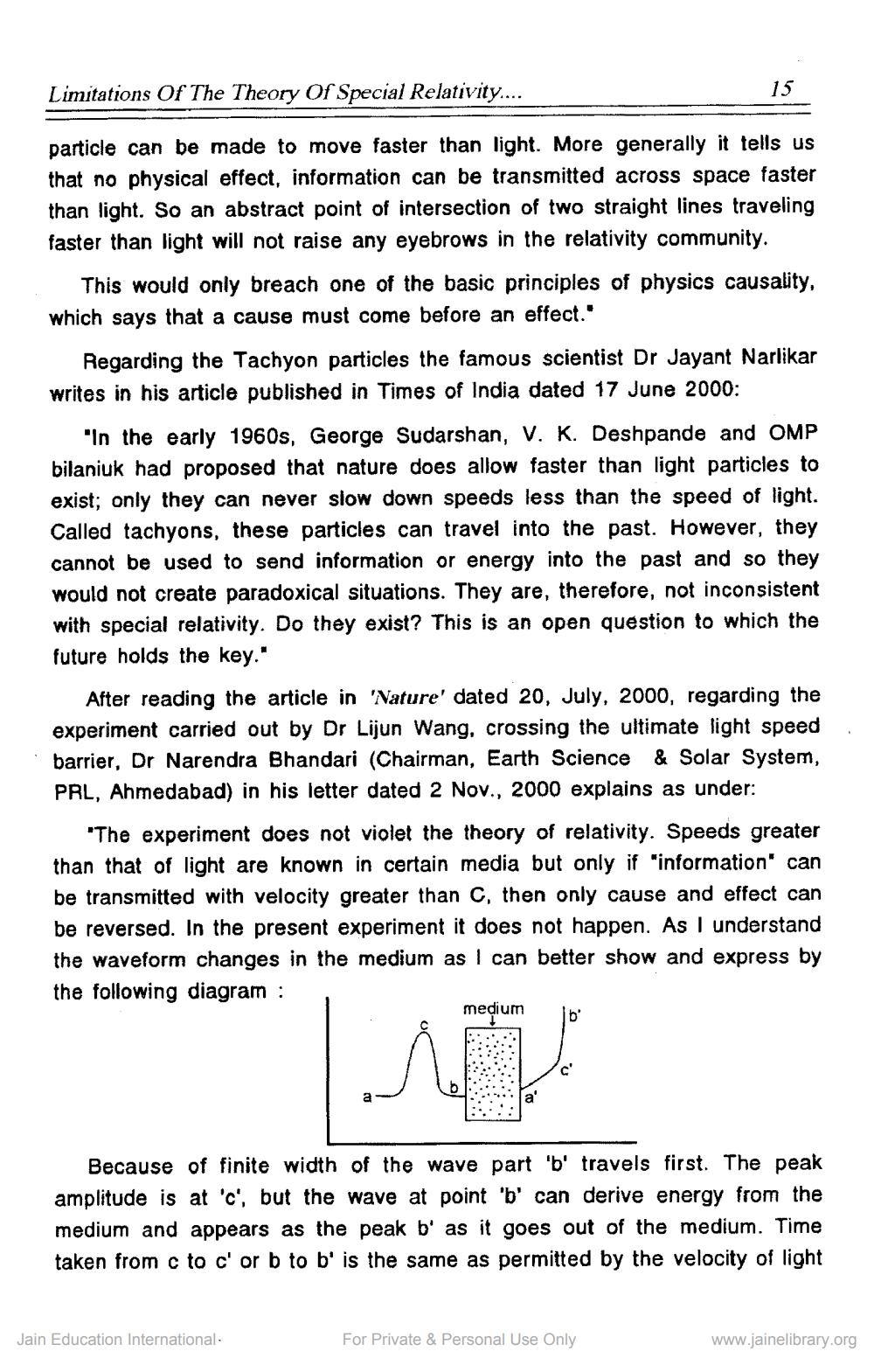________________
Limitations Of The Theory Of Special Relativity....
particle can be made to move faster than light. More generally it tells us that no physical effect, information can be transmitted across space faster than light. So an abstract point of intersection of two straight lines traveling faster than light will not raise any eyebrows in the relativity community.
This would only breach one of the basic principles of physics causality, which says that a cause must come before an effect."
Regarding the Tachyon particles the famous scientist Dr Jayant Narlikar writes in his article published in Times of India dated 17 June 2000:
"In the early 1960s, George Sudarshan, V. K. Deshpande and OMP bilaniuk had proposed that nature does allow faster than light particles to exist; only they can never slow down speeds less than the speed of light. Called tachyons, these particles can travel into the past. However, they cannot be used to send information or energy into the past and so they would not create paradoxical situations. They are, therefore, not inconsistent with special relativity. Do they exist? This is an open question to which the future holds the key."
15
After reading the article in 'Nature' dated 20, July, 2000, regarding the experiment carried out by Dr Lijun Wang, crossing the ultimate light speed barrier, Dr Narendra Bhandari (Chairman, Earth Science & Solar System, PRL, Ahmedabad) in his letter dated 2 Nov., 2000 explains as under:
"The experiment does not violet the theory of relativity. Speeds greater than that of light are known in certain media but only if "information" can be transmitted with velocity greater than C, then only cause and effect can be reversed. In the present experiment it does not happen. As I understand the waveform changes in the medium as I can better show and express by the following diagram :
medium
a
Jain Education International.
ib'
C'
Because of finite width of the wave part 'b' travels first. The peak amplitude is at 'c', but the wave at point 'b' can derive energy from the medium and appears as the peak b' as it goes out of the medium. Time taken from c to c' or b to b' is the same as permitted by the velocity of light
For Private & Personal Use Only
www.jainelibrary.org




